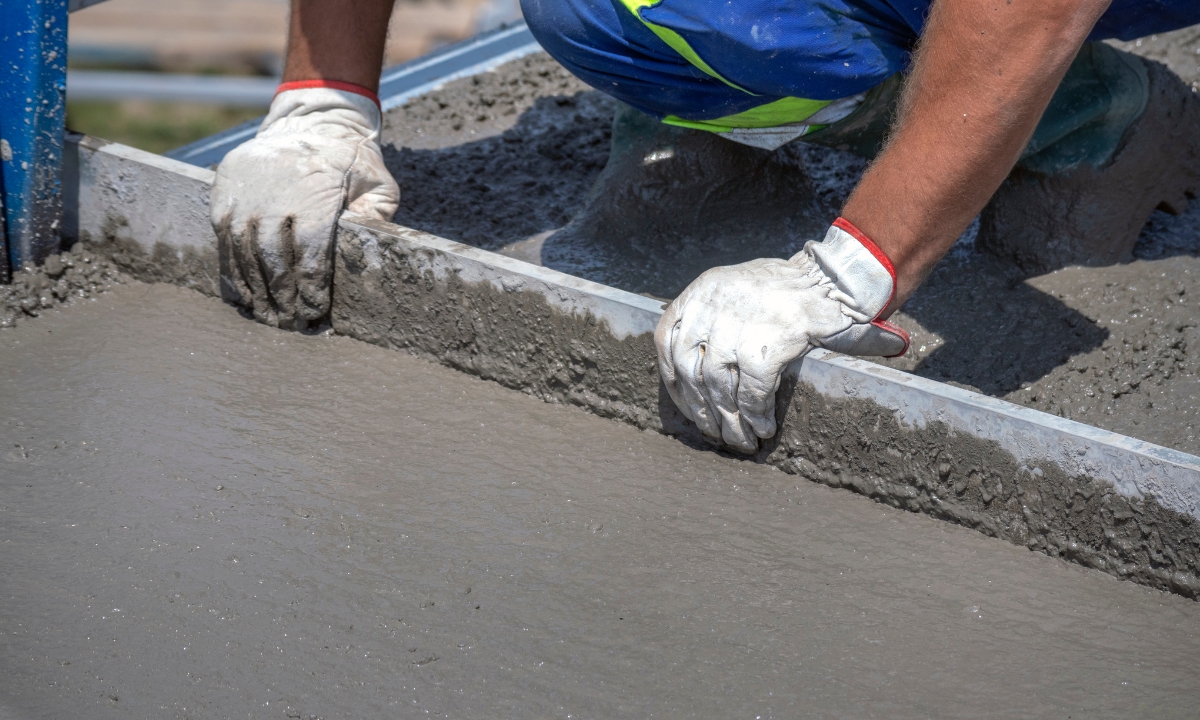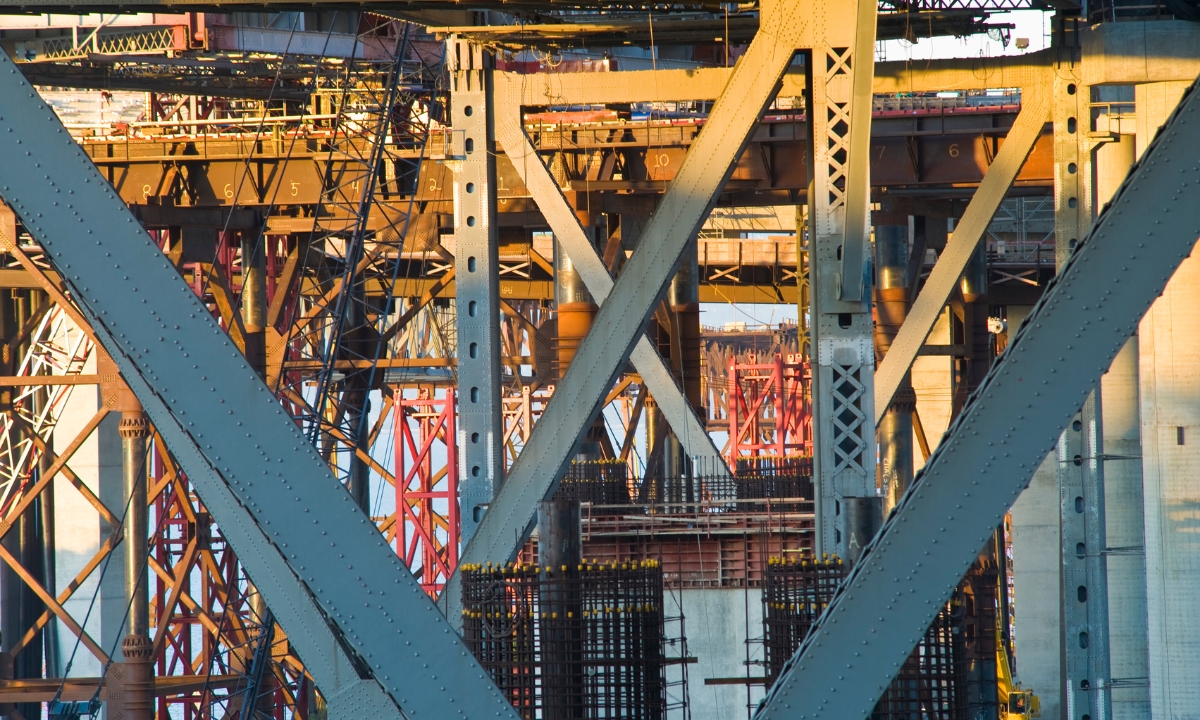Bridge construction and maintenance are highly specialized fields that require access to various types of heavy equipment, such as under-bridge platforms, scaffolding, cranes, and inspection rigs. For many companies and contractors, the question arises: should they invest in buying equipment outright or consider renting it?
Rent or Buy?
The decision of whether to rent or buy bridge equipment is a critical one for businesses operating in the transportation infrastructure industry. Although purchasing bridge equipment can provide a sense of ownership and control, renting offers several advantages that may make it a more attractive option for many organizations.
In fact, the equipment rental industry is experiencing something of a boom in recent years. According to a report from Arizton,
“The U.S. construction equipment rental market size was estimated at USD 39.2 billion in 2022 and is expected to reach USD 54.17 billion by 2029… In 2021, the Biden-Harris government signed the Bipartisan Infrastructure Law (BIL), which focused on promoting the nation’s infrastructure and competitiveness by rebuilding roads, bridges, ports, and airports. It also included the upgradation of rail systems and providing cleaner and cheaper energy. Investment in the construction industry during November 2022 was recorded at USD 1,807.5. Private construction received worth USD 1,426.4 billion in investment during the same period.”
While purchasing equipment can offer some advantages, renting bridge equipment has become an increasingly popular option, and for good reason. Read on as we guide you through the benefits of renting bridge inspection and maintenance equipment compared to buying, highlighting factors such as cost-effectiveness, flexibility, maintenance, and the latest technology.

Cost-Effectiveness
One of the most compelling reasons to rent rather than buy bridge equipment is the significant cost savings. Bridge construction and maintenance projects require a wide array of specialized machinery, which can come with high upfront costs. For example, depending on the size and capacity of the under bridge inspection unit, the purchase price can range from $58,000 to $450,000 or more.
No Large Initial Investment:
Purchasing equipment involves a substantial capital investment. For many small to medium-sized contractors, this can put a strain on cash flow and limit financial flexibility. On the other hand, renting allows companies to use the latest and most advanced equipment without the heavy financial burden of purchasing.
Pay for What You Need:
Renting enables contractors to only pay for the equipment they need, and only for as long as they need it. This is particularly useful for bridge projects that may require different types of equipment at various stages. Contractors can avoid the cost of purchasing multiple machines and instead rent them as required, ensuring the project stays within budget.
Flexibility in Project Demands
Bridge construction and maintenance projects often have unique and fluctuating demands. Equipment requirements may change depending on the type of bridge, the project’s scope, or unforeseen challenges. Renting offers the flexibility to adapt to these varying needs.
Access to a Range of Equipment:
When renting, contractors have access to a broad inventory of equipment, from under-bridge inspection platforms to cranes and lifts. This ensures that whatever equipment is necessary for the project, it can be obtained quickly. If a project demands additional equipment or a different type than originally planned, renting provides the flexibility to switch or add to the fleet without long-term commitments.
Seasonal and Short-Term Projects:
Some bridge projects are seasonal or short-term, making it impractical to invest in expensive equipment that won’t be used year-round. Renting allows companies to access high-quality machinery during peak times without the responsibility of storing or maintaining it during downtime. This is particularly beneficial for contractors working on short-term bridge repairs or seasonal inspection projects.
Eliminating Maintenance and Storage Costs
Owning bridge equipment comes with the added responsibilities of maintenance, repairs, and storage, all of which add to the overall cost. Renting eliminates these burdens, providing a convenient and hassle-free solution for contractors.
Maintenance-Free Equipment:
When you rent equipment, the responsibility for maintenance typically falls on the rental company. This means contractors can focus on their project rather than worrying about maintaining and repairing machines. If equipment malfunctions during the rental period, most rental companies will provide replacements or perform repairs quickly, ensuring that project downtime is minimized.
No Need for Storage:
Heavy machinery, especially large items like under-bridge platforms or cranes, requires significant storage space when not in use. Storing this equipment can be costly, as it may require specialized facilities. Renting eliminates the need to invest in storage solutions, as the equipment can be returned to the rental company once the project is complete. This is particularly advantageous for contractors who don’t have a permanent location to store large machinery.
Access to the Latest Technology
Technology in bridge construction and inspection equipment is constantly evolving. New models are often more efficient, safer, and easier to operate than older versions. When purchasing equipment, companies run the risk of their machines becoming outdated over time.
Stay Up-to-Date with Innovation:
Renting allows contractors to access the most up-to-date and technologically advanced equipment without the need to continually upgrade their own inventory. This is especially important for bridge work, where advancements in safety and efficiency can significantly improve the quality of the work and reduce the risk of accidents. Rental companies frequently update their inventory, so contractors always have access to cutting-edge machinery that meets the latest industry standards.
Test New Equipment Before Committing:
For contractors who are considering purchasing equipment in the future, renting provides an opportunity to test different models and brands. This allows them to evaluate performance, usability, and efficiency before making a long-term investment. It’s a risk-free way to ensure that any equipment purchased in the future will meet the needs of their projects.
Reduced Liability and Risk
Bridge work comes with inherent risks, and owning equipment adds an additional layer of liability. Renting equipment can help contractors mitigate some of these risks.
Rental Companies Provide Insurance and Liability Coverage:
Most reputable rental companies offer insurance and liability coverage on their equipment. This protects contractors from potential costs associated with damage or malfunction, which they would otherwise be responsible for if they owned the equipment. The rental company typically handles all liability for maintaining the equipment in safe working order, relieving contractors of a significant responsibility.
Less Financial Risk:
Renting equipment reduces financial risk by preventing contractors from being locked into long-term financial commitments. If a company purchases expensive equipment and its services are no longer in demand, they may be stuck with underutilized or even obsolete machinery. Renting avoids this issue by allowing companies to return equipment when it is no longer needed, offering financial flexibility and peace of mind.
Scalability for Growing Businesses
For smaller companies or those experiencing growth, renting equipment can help scale operations without the need for large capital investments.
Expanding Capacity:
As businesses grow and take on larger bridge projects, renting enables them to quickly scale up their equipment needs without needing to make large upfront purchases. This scalability allows contractors to take on more complex and diverse projects while keeping operating costs manageable.
Building Relationships with Rental Providers:
Contractors who rent equipment frequently often build strong relationships with rental companies, which can lead to preferential rates, quicker access to equipment, and dedicated support. These relationships can be a valuable asset for growing businesses, ensuring that they have reliable access to the equipment they need as their operations expand.
Environmental Benefits
An often-overlooked advantage of renting is the environmental impact. Renting equipment supports sustainability by reducing the demand for manufacturing new machinery and allowing existing equipment to be used by multiple contractors.
Minimizing the Carbon Footprint:
By renting instead of purchasing, contractors can reduce their overall carbon footprint. Shared use of rental equipment lowers the total number of machines in circulation, meaning fewer resources are used for manufacturing, maintenance, and disposal. This is especially important in an industry like construction, where sustainability is becoming increasingly prioritized.
Reducing Idle Equipment:
Purchasing equipment often leads to idle machinery when it’s not in use, which is inefficient and wasteful. Renting ensures that equipment is only used when needed, reducing energy consumption and wear and tear from sitting idle.

Factors to Consider When Choosing Between Renting and Buying
While renting offers numerous advantages, there are critical factors to consider when deciding:
- Frequency of use: If equipment is needed frequently or for extended periods, purchasing may be more cost-effective.
- Project duration: For long-term projects, purchasing may be a more viable option.
- Specific equipment requirements: If the equipment has unique specifications or modifications, purchasing may be necessary.
- Budget constraints: Renting can be a good option for businesses with limited capital.
The decision to rent or buy bridge equipment also hinges on other factors, including financial considerations, project requirements, and risk tolerance. By carefully evaluating these factors, businesses can make an informed choice that aligns with their specific needs and goals.
For contractors in the bridge construction and maintenance industry, renting equipment offers numerous advantages over purchasing. Renting allows businesses to remain flexible, cost-effective, and technologically up-to-date without the long-term financial commitments and responsibilities associated with ownership.
From eliminating maintenance and storage costs to providing access to the latest technology, renting is an attractive solution that can help extend a company’s capabilities while reducing risks. In an industry where projects vary in scale and complexity, renting bridge equipment ensures that contractors have the right tools for the job, exactly when they need them.
Under Bridge Platforms: Your Guide to Renting the Right Equipment When You Need It
The team at Under Bridge Platforms is proud to provide our clients throughout the Western States, including California, Washington, Oregon, Idaho, Nevada, Montana, and Wyoming with the very best in quality under bridge platform equipment.
Our expanding inventory of under bridge access platforms includes state-of-the-art bridge access platforms such as the massive DFM Bridgemaster-Art-B-4 or the versatile Aspen A-30 Unit.
With a professional firm you can rely on to guide you through the process, buying or renting the right under bridge inspection vehicle and bridge inspection platform equipment for your project means we are here to help you make the proper selection.
Contact us today and let us help you with your under bridge platform and bridge access needs.


Recent Comments